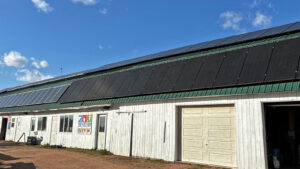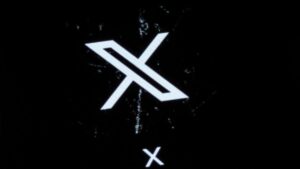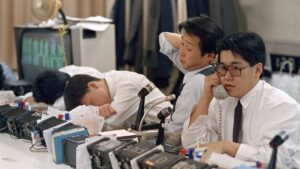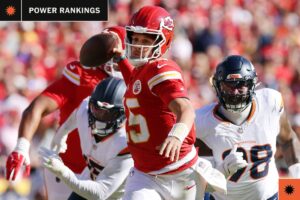Wi might live in a doughnut. It sounds like Homer Simpson’s fever dream, but it could be the shape of the entire universe – to be precise, a hyperdimensional donut that mathematicians 3-torus.
This is just one of the many possibilities for the topology of the cosmos. “We are trying to find the shape of space,” says Yashar Akrami of the Institute of Theoretical Physics in Madrid, a member of an international partnership called Compact (Collaboration for Observations, Models and Predictions of Anomalies and Cosmic Topology). In May, the Compact team explained that the question of the shape of the universe remains wide open and examine the future prospects for its capture.
“This is high-risk, high-reward cosmology,” said team member Andrew Jaffe, a cosmologist at Imperial College London. “I will be very surprised if we get something, but I will be very happy if we do.”
The topology of an object specifies how its parts are connected. A donut has the same topology as a teacup, the hole is equivalent to the handle: you can reshape a clay donut into a cup shape without tearing it. Similarly, a sphere, cube and banana all have the same topology, without holes.
The idea that the entire universe could have a form is difficult to imagine. In addition to the topology, there is another aspect: the curvature. In his theory of general relativity in 1916, Albert Einstein showed that space can be curved by massive objects, creating the force of gravity.
Imagine space as two-dimensional, like a sheet, rather than having all three spatial dimensions. Flat space is like a flat sheet of paper, while curved space can be like the surface of a sphere (positive curvature) or a hall (negative curvature).
These possibilities can be distinguished by simple geometry. On a flat sheet, the angles of a triangle must add up to 180 degrees. But on a curved surface, this is no longer the case. By comparing the actual and apparent sizes of distant objects such as galaxies, astronomers can see that our universe as a whole looks as close to flat as we can measure: it’s like a flat sheet with tiny dimples where each star deforms the space around it it.
“Knowing what the curvature is, you know what kinds of topologies are possible,” says Akrami. Flat space can only go on forever, like an infinite sheet of paper. This is the most boring, trivial possibility. But a flat geometry also fits some topologies that cosmologists euphemistically call “non-trivial,” which means they’re much more interesting and can get pretty mind-boggling.
There are, for mathematical reasons, exactly 18 possibilities. In general, they correspond to the universe having a finite volume but no edges: if you travel beyond the scale of the universe, you end up back where you started. It’s like the screen of a video game in which a character that appears on the far right reappears on the far left – as if the screen is looped. In three dimensions, the simplest of these topologies is the 3-torus: like a box from which you enter through any face and re-enter through the opposite face.
Such a topology has a bizarre implication. If you could look out over the entire universe – which would require the speed of light to be infinite – you would see endless copies of yourself in all directions, like a 3D hall of mirrors. Other, more complex topologies are variations on the same theme, where the images will appear slightly shifted, for example – you re-enter the box in a different place, or perhaps rotated so that right becomes left.
If the universe’s volume is not too large, we might be able to see such duplicate images – an exact copy, say, of our own galaxy. “People started looking for topology at very small scales by looking at images of the Milky Way,” says Jaffe. But it’s not entirely simple because of the finite speed of light – “you have to look for them as they were a long time ago” – and so you may not recognize the duplicate. Our galaxy is also moving, so the copy will not be in the same place as we are now. And some of the more exotic topologies would shift it as well. In any case, astronomers have seen no such cosmic duplication.
If, on the other hand, the universe is truly immense but not infinite, we may never be able to distinguish between the two, says Akrami. But if the universe is finite, at least along some directions, and not much larger than the farthest we can see, then we should be able to detect its shape.
One of the best ways to do this is to look at the cosmic microwave background (CMB): the very faint glow of heat left over from the big bang itself, filling the cosmos with microwave radiation. First detected in 1965, the CMB is one of the most important pieces of evidence that the Big Bang happened at all. It is almost uniform throughout the cosmos. But as astronomers developed increasingly precise telescopes to track and map it across the sky, they found small variations in the “temperature” of this microwave sea from place to place. These variations are remnants of random temperature differences in the nascent universe—differences that helped seed the emergence of structure, so that matter in the universe is not spread evenly across the cosmos like butter on bread.
The CMB is therefore a kind of map of what the universe looked like at the earliest stage we can still observe today (about 10 billion years ago), imprinted on the sky around us. If the universe has a non-trivial topology that produces copies in some or all directions, and if its volume is not significantly larger than the sphere onto which we see the projection of the CMB, then these copies should leave traces in the temperature variations . Two or more spots will match, like duplicates of fingerprints. But it is not easy to detect since these variations are random and faint and some topologies would shift the duplicates. Nevertheless, we can search among the statistics of the small temperature variations and see if they are random or not. It is pattern-seeking, like traders looking for non-randomness in stock market fluctuations.
The Compact team looked carefully at the chances of getting anything. This showed that, although no non-random patterns have yet been seen in the CMB map, they have not been ruled out either. In other words, many strange cosmic topologies are still completely consistent with the observed data. “We haven’t ruled out as many interesting topologies as some previously thought,” says Akrami.
Others outside the group agree. “Previous analyzes do not rule out the possibility of observable effects due to the universe having a non-trivial topology,” says astrophysicist Neil Cornish of Montana State University in Bozeman, who devised such an analysis 20 years ago . Ralf Aurich, an astronomer at Ulm University in Baden-Württemberg, Germany, also says: “I think that non-trivial topologies are still a possibility.”
to newsletter promotion
However, isn’t it a bit perverse to think that the universe might have a twisted donut shape rather than having the simplest possible topology of infinite size? Not necessarily. Going from nothing to infinity in the big bang is quite a step. “It’s easier to create small things than big things,” says Jaffe. “So it’s easier to create a universe that’s compact in some way—and a non-trivial topology does that.”
Moreover, there are theoretical reasons to suspect that the universe is finite. There is no agreed upon theory of how the universe came to be, but one of the most popular frameworks for thinking about it is string theory. But current versions of string theory predict that the universe should have not just four dimensions (three of space, plus time), but at least 10.
String theorists argue that all the other dimensions may have become highly “packed”: they are so small that we do not experience them at all. But why would only six or so have become finite while the others remained infinite? “I would say it’s more natural to have a compact universe, rather than four infinite dimensions and the other compact,” says Akrami.
And if the search for cosmic topology showed that at least three of the dimensions are indeed finite, Aurich says, that would rule out many of the possible versions of string theory.
“A detection of a compact universe would be one of the most astonishing discoveries in human history,” says cosmologist Janna Levin of Barnard College in New York. That’s why searches like this, “though they threaten to disappoint, are worth it.” But if she had to place a bet, she adds, “I’d bet against a small universe.”
Will we ever know the answer? “It is very likely that the universe is finite, but at the topological scale larger than we can probe with observations,” says Cornish. But he adds that some strange features in the CMB pattern are “exactly the kind you’d expect in a finite universe, so it’s worth investigating further”.
The problem with looking for patterns in the CMB, Cornish says, given how each of the 18 flat topologies can be varied, “there are an infinite number of possibilities to consider, each with its own unique predictions, so it’s impossible to to try it all out.” Perhaps the best we can do then is to decide which possibilities seem most likely and see if the data fits them.
Aurich says a planned improvement of the CMB map in an international project called CMB stage 4, using a dozen telescopes in Chile and Antarctica, should help the hunt. But the Compact researchers suspect that, unless we’re lucky, the CMB alone may not allow us to definitively answer the topology question.
However, they say there’s a lot of other astronomical data we can use too: not just what’s on the “sphere” of the CMB map, but what’s inside it, in the rest of space. “Everything in the universe is affected by topology,” says Akrami. “The ideal case would be to combine everything that is observable and hopefully that will give us a big sign of the topology.” The team either wants to detect that signal, he says, or show that it is impossible.
There is various instruments now in use or under construction which will fill in more details of what is within the volume of observable space, such as the European Space Agency’s Euclid Space Telescope, launched last yearand the SKA observatory (formerly the Square Kilometer Array), a system of radio telescopes being built in Australia and South Africa. “We want to have a census of all the matter in the universe,” says Jaffe, “which will allow us to understand the global structure of space and time.”
If we get it right – and if the cosmic topology turns out to make the universe finite – Akrami imagines a day when we’ll have a kind of Google Earth for the entire cosmos: a map of everything.






